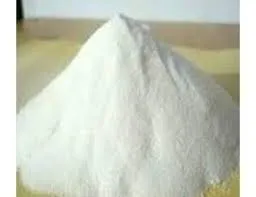
Aug . 18, 2024 02:26 Back to list
Hydroxyethylcellulose Powder Uses and Benefits in Various Applications
Hydroxyethylcellulose Powder An Essential Ingredient in Modern Formulations
Hydroxyethylcellulose (HEC) powder is a non-ionic, water-soluble polymer derived from cellulose, a natural polymer found in the cell walls of plants. This versatile compound has gained significant attention across various industries due to its unique properties and functional capabilities. As a thickening agent, binder, stabilizer, and film former, HEC powder is widely used in personal care products, pharmaceuticals, food applications, and industrial formulations.
Hydroxyethylcellulose Powder An Essential Ingredient in Modern Formulations
In pharmaceuticals, HEC powder plays a crucial role in drug delivery systems. Its ability to control the viscosity of formulations allows for improved stability and bioavailability of active ingredients. HEC can be used in oral, topical, and ophthalmic formulations, providing a reliable means of incorporating therapeutic agents into liquids and gels. By adjusting the concentration of HEC, formulators can tailor the release of the active ingredients, ensuring they are delivered effectively to the target area, which is particularly important in controlled-release systems.
hydroxyethylcellulose powder

The food industry also benefits from the properties of hydroxyethylcellulose. As a food additive, HEC is employed for its thickening and stabilizing abilities. It helps maintain the texture of sauces, dressings, and dairy products, preventing separation and enhancing the overall mouthfeel. Additionally, HEC is used as a fat replacer in low-fat and reduced-calorie products, providing a creamy texture without the added calories. Its use in gluten-free baking has also gained popularity, as it improves the dough's consistency, helping to mimic the structure and chewiness that gluten provides.
In industrial applications, HEC powder is commonly used as a thickener and stabilizer in paints, coatings, and adhesives. Its ability to enhance the suspension of pigments and particles makes it an invaluable component in formulating products that require consistent viscosity and flow. In construction, HEC is utilized in mortar and cement-based products, where it improves workability and water retention, ultimately leading to better bonding and durability of structures.
Moreover, hydroxyethylcellulose is regarded as safe for use across various applications, as it is non-toxic and biodegradable, aligning with the growing demand for sustainable and environmentally friendly materials. As consumers become more aware of the ingredients in their products, the demand for natural and safe additives like HEC continues to rise.
In conclusion, hydroxyethylcellulose powder is an essential ingredient in modern formulations, providing versatile solutions across multiple industries. Its unique properties as a thickener, stabilizer, and film former enhance the functionality and user experience of products in personal care, pharmaceuticals, food, and industrial applications. As research continues to uncover new uses for this remarkable polymer and as sustainability becomes increasingly important, HEC is likely to remain a key ingredient in innovative formulations for years to come.
-
Unlocking the Benefits of HPMC Products: A Gateway to Versatile Applications
NewsAug.07,2025
-
Unleashing the Potential of HPMC Ashland: A Comprehensive Look
NewsAug.07,2025
-
Tile Bonding Cellulose: The Key to Superior Adhesion and Durability
NewsAug.07,2025
-
Hydroxypropyl Methylcellulose Powder: The Versatile Component in Modern Pharmaceuticals
NewsAug.07,2025
-
Hydroxyethyl Cellulose: The Versatile Solution for Various Industries
NewsAug.07,2025
-
Hydroxyethyl Cellulose (HEC): The Versatile Polymer for Various Applications
NewsAug.07,2025







